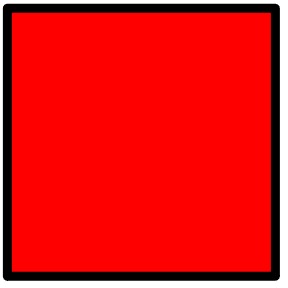Subsection 2.2.4 A Truth Table Definition of the Operator not
Next we’ll define not. It is the only example we’ll consider of a unary operator (i.e., it acts on a single operand). All of the other operators act on exactly two operands and, thus, are called binary operators.
We will use \(\neg \) as the symbol for not. (Notational aside: Sometimes people write ∼p or p. These mean the same thing as \(\neg \) p.)
Here is the truth table for not:
| \(\text {p} \) | \(\neg \text {p} \) |
|---|---|
| T | F |
| F | T |
Clearly not simply reverses the truth value of its operand. This corresponds to our everyday use of the word “not”.
English AsideThe concept of negation can be expressed in many ways in English. The most obvious is to use the word “not”. But other words, such as “only” and “just” have implied negations. For example, if one says, “Of Joe, Bill, and Jim, only Bill is going to the store,” what is meant is that Joe is not going to the store, Bill is going to the store, and Joe is not going to the store. This happens even though the word “not” did not appear anywhere in the sentence. Similarly, we could have said, “Of Joe, Bill, and Jim, just Bill is going to the store.”
The words, “never”, “nowhere”, “none”, “only”, “just”, “unless”, “except”, “without”, and “but” all include implied negations. There are also prefixes that negate the property they precede. These include “un-”, “il-”, and “in-”.
We’ve just seen that not reverses the truth value of its operand. Because there are only two truth values, if we apply not a second time, we’ll get back the original value.
| \(\textbf {p} \) | \(\neg \textbf {p} \) | \(\neg \neg \textbf {p} \) |
|---|---|---|
| T | F | T |
| F | T | F |
This observation will be the basis for the first of the Boolean identities that we’ll present in the next chapter.
English AsideIn logic, saying not more than once matters. If you say, “It is not the case that I am not going to the store”, then you are going to the store.
There’s a great example, in an episode of Big Bang Theory, of a quadruple negative that comes out positive.
Here’s an example where one of the negatives is a prefix (“in-”). We actually heard this one on tv:
The call on the [football] field is overturned only if the call is not incontrovertible.
In other words, the call is overturned only if it is controvertible.
But we should observe that some languages and some English dialects (including standard English up until about the 16th century) ignore all but the first instance of “not”. For example, “I ain’t seen nothing,” generally means, “I didn’t see anything”. And we all know what, “Ain’t Momma happy, ain’t nobody happy,” means. This usage is called a double negative
Exercises Exercises
Exercise Group.
Recall the truth table for not that we just presented:
| p | ¬p |
|---|---|
| T | F |
| F | T |
In both parts of this problem, let p correspond to the claim, “The square is blue.”
1.
(Part 1) Consider this situation:

Which row of the not truth table tells us whether the claim, “The square is not blue,” is true?
Line 1 and the claim is false.
Line 2 and the claim is true.
2.
(Part 2) Consider this situation:
Which row of the not truth table tells us whether the claim, “The square is not blue,” is true?

Line 1 and the claim is false.
Line 2 and the claim is true.
2.
Suppose that we want to represent the sentence, “Neither the King of France nor the Prince of Unicorns has red hair”.
Let k correspond to the claim, “The King of France has red hair”.
Let u correspond to the claim, “The Prince of Unicorns has red hair”.
Which of these logical statements corresponds to our claim:
k ∨ u
¬k ∨ ¬u
¬k ∧ ¬u
¬(k ∧ u)
3.
3. Suppose that I say, “No way am I not gonna come to the party.” Assuming that I speak standard English, which of these is true:
I’m going to go to the party.
I’m not going to go the party.
4.
4. Consider the following quote from a newspaper story:
The Supreme Court on Monday left intact a state court decision invalidating an Oklahoma law that effectively banned P.
Is P legal in Oklahoma?
isP is not legal in Oklahoma.
